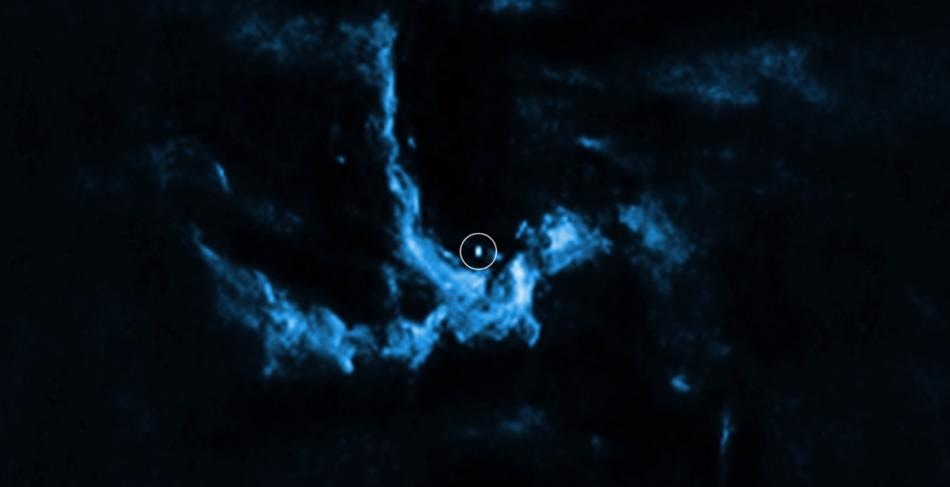Radio astronomy is brought back to its celestial origin with the first image of the supermassive black hole at the center of the Milky Way galaxy. The Event Horizon Telescope (EHT), a global network of millimeter-wave radio telescopes, captured a new, groundbreaking image of the spot where the first cosmic radio waves were identified.
 A Very Large Array image of the Milky Way’s central region. The bright spot marked by the circle is Sagittarius A*, where our galaxy's central black hole is located. Image Credit: NRAO/AUI/NSF
A Very Large Array image of the Milky Way’s central region. The bright spot marked by the circle is Sagittarius A*, where our galaxy's central black hole is located. Image Credit: NRAO/AUI/NSF
In 1932, Bell Telephone Laboratories engineer, Karl Jansky, made the first detection marking the inception of radio astronomy.
The new EHT image represents the culmination of a long history of Milky Way studies, which began in 1610 when Galileo Galilei used his telescope to uncover that our galaxy, appearing to the naked eye as clouds, is actually made up of stars. William Herschel, a British astronomer, created a rudimentary chart of the Milky Way in 1785.
Harlow Shapley, an American astronomer, found the Milky Way’s core in 1918 by using the recently discovered distance-measuring technique offered by Cepheid variable stars to conclude that the Milky Way’s halo of globular star clusters is centered on a place in the constellation Sagittarius.
Thick clouds of gas and dust hide that region from visible-light telescopes.
In 1928, Bell Laboratories hired Jansky to figure out what was causing the noise interfering with short-wave radio telephone communications. By 1932, he had developed a highly directional antenna and identified a variety of noise sources. However, “a very continuous hiss type static whose origin is unknown” remained a mystery.
The time of day when this hiss appeared changed with the seasons. Jansky checked various astronomy textbooks on the advice of an astronomer acquaintance and decided in December 1932 that the odd hiss was originating from “beyond the solar system.”
In April of 1933, he disclosed this in a paper he gave at a Washington, D.C. gathering. On May 5th, 1933, the New York Times published his statement on the first page.
Jansky was featured on a national radio network ten days later, claiming that he had pinpointed the location of the noise he had seen in the sky, “that seems to confirm Dr. Shapley’s calculation that the radio waves seem to come from the center of gravity of our galaxy.”
Sagittarius A, the brightest source of radio emission in that constellation, was later named after it. Australian radio astronomers traced the source of the emission to the galaxy’s center in 1951.
In 1974, Bruce Balick and Robert Brown used the Green Bank Interferometer at the National Radio Astronomy Observatory to identify a highly bright and compact object, which Brown eventually named Sagittarius A*.
The powerful radio emission by the object, abbreviated Sgr A*, became the main theory for what powers it. The object’s mass was estimated to be 3 million times that of the sun by infrared and submillimeter investigations in 1994.
A 10-year investigation of the orbital motion of a star dubbed S2 near Sgr A* was published in 2002 by a team led by Reinhard Genzel of the Max Planck Institute for Extraterrestrial Physics. According to the findings, the center object is more than 4 million times the mass of the sun.
Another team published a paper in 2009 based on additional measurements of stellar orbits in the region, concluding that the core object is most likely a black hole because no other phenomenon can compress that much material into such a small space.
This and other investigations of Sgr A* earned Genzel and Andrea Ghez of UCLA the Nobel Prize in Physics in 2020 for “the most convincing evidence yet of a supermassive black hole at the center of the Milky Way.”
The EHT Collaboration’s generation of an image that matches the theoretical predictions of what should be observed surrounding a black hole strengthens the argument.